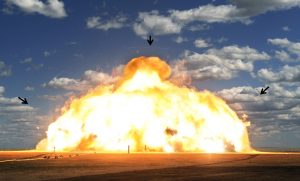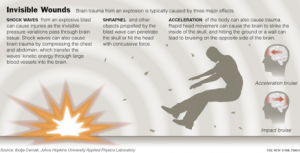
This is the second article of four on arc flash.
The next arc flash concern after heat energy is blast. The danger comes in the forms of a pressure wave, sound, light, particulates or shrapnel.

The pressure wave or blast is the result of rapid heating of the air to temperatures up to 10,000°F. The pressure wave travels out from the source at the speed of sound, but dissipates as the square of the distance as with heat. Pressures within a foot of the source vary with
the energy, but have been measured at around 2 – 5 pounds per square inch. Other estimates have the total force on the human body at around 400 – 500 pounds. The potential for injury is that the worker exposed to that force will be moved violently away from the blast and is compounded by what stops the worker. The pressure wave includes sound. An extremely low pitch, but powerful sound capable of rupturing the ear drum. Although sound energy dissipates with distance, many underground arc flashes occur in an underground bunker in which the sound can be amplified. Ligh
t is not often discussed in an arc flash, but light can cause damage to the eyes. The levels of ultraviolet radiation are much higher than sunlight although the duration is typically short.
Finally , the blast can result in parts of the electrical system being blown off. This can be parts of the electrical connection or its container such as a cabinet. In one video published by Baraday, a pipe wrench near the blast was seen flying through the air.
, the blast can result in parts of the electrical system being blown off. This can be parts of the electrical connection or its container such as a cabinet. In one video published by Baraday, a pipe wrench near the blast was seen flying through the air.
The main point of this discussion is that an arc blast has more dangers than just heat energy. Minimum PPE will give protection against the heat, but may not be adequate against the pressure wave, light, sound and shrapnel. An arc-suppression blanket such as the Therm-Equip® BlastMat™ can prevent or reduce these threats to the worker.
For more information or to discuss possible applications for your needs, contact Therm-Equip, Inc.
Look for the 3rd article on Burning in September!
